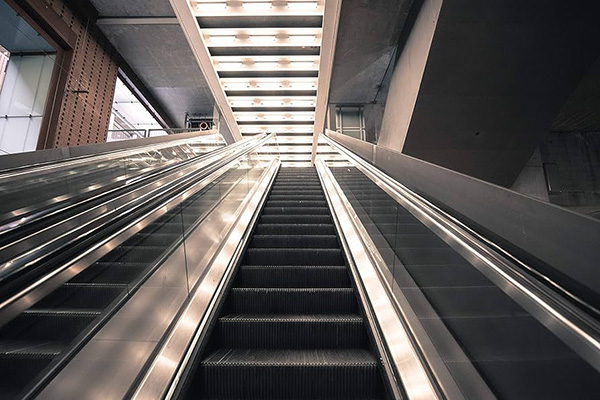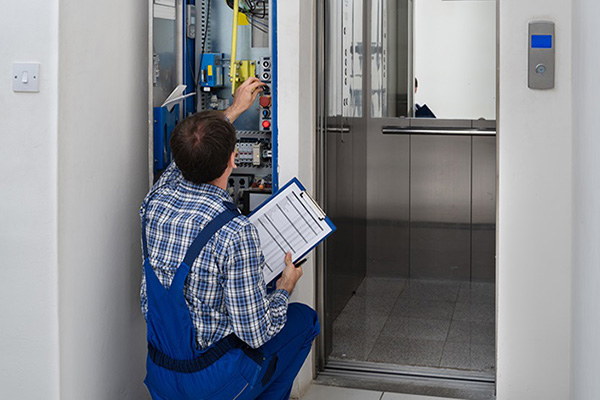Elevators in commercial and residential buildings are designed to operate safely, however accidents can still occur. If you are a building owner or manager, it is your responsibility to ensure that accidents are prevented and that the people who rely on the vertical transportation equipment in your commercial, industrial or private residential facility can reach their destinations safely, quickly and reliably.
Fortunately, passenger injuries are very rare because elevators (that are properly maintained) are equipped with features that allow them to “fail safe” – that is, shut down in a way that keeps passengers safe inside or outside the elevator car. But getting stuck in an elevator is stressful for passengers, and emergency calls or unexpected shutdowns can be a hassle for you, so you should take preventative measures to avoid them.
Below we’ll highlight some of the most common causes of elevator accidents today, as well as the best ways you, as a building owner or manager, can minimize their impact on your vertical transportation systems.
Older Elevators Need Retrofitting
Old, outdated systems that haven’t been retrofitted are a leading cause of elevator accidents. If older elevator units aren’t properly maintained or updated, you’re at risk of equipment failure at best – or passenger injury at worst.
Think about it – all types of machinery, including cars, computers, and kitchen appliances – have a lifespan. Elevators often don’t need to be completely replaced, but their internal systems need to be updated periodically. As a general rule, if your elevator is an older model (especially over 20 years old), you should consider retrofitting your system to ensure the safest and most efficient journey for your passengers.
The most common signs that an elevator needs an upgrade include: 1) Unreliable service; 2) Frequent shutdowns or jams; 3) Code violations; 4) Excessive wear and tear; 5) Inability to procure replacement parts; 6) Excessive energy consumption.
Retrofitting your traction elevator system with an energy-efficient regenerative drive will increase its energy efficiency and reduce its energy consumption. The tallest office building in Winnipeg, Manitoba, Canada, recently underwent a major overhaul of its 30-year-old elevators, which included the installation of sustainable regenerative drives. You can read about the project here.
Leveling Issues
When the elevator stops on a floor in your building, the floor of the elevator car must always be level with the floor of the building. Improper leveling is another common problem that can lead to accidents. ASME building code regulations dictate that elevators must always be properly aligned and within tolerances to prevent significant entrapment hazards for people entering and exiting the elevator.
Elevator Door Problems
While a variety of factors can contribute to problems with older elevators, one common problem elevator technicians encounter is related to “safety edges.” A safety edge is a mechanical retracting device that prevents elevator doors from closing on passengers. If the safety edges on your older elevator doors fail, the doors may not reopen, trapping passengers and requiring an unscheduled call to your elevator service company.
Modern elevator systems use an infrared alternative called a door guard. These devices are invisible beams that, when “broken,” notify the elevator control system that someone has approached the car threshold, allowing passengers to board and alight safely without the risk of hitting the door. Upgrading from a safety edge door to a door screen system can save you time and money in the long run.
Building codes mandate maximum and minimum forces when elevator doors are closing. It is important to include regular door maintenance in your Maintenance Control Program (MCP) to prevent door screen failure. In these cases, the doors could strike the passenger(s) and possibly cause injury. This potential outcome is of particular concern/consideration in nursing homes, where passengers may be less mobile or agile.
Common causes of door screen failure include dirty screens and general misuse (such as loading the elevator with a trolley/doll that hits the screen) of the unit itself. If you, as the owner or building manager, notice any damage to the screens, contact your elevator company for immediate repairs. As with all aspects of your elevator unit, it is essential to stay as up to date on maintenance as possible.
Lack of Barriers
The purpose of barriers is to clearly demarcate the area where construction or maintenance is taking place, as well as to prevent people from entering an active work area. Barriers not only maintain public safety, but also keep maintenance personnel working on the unit safe.
Properly installing barriers around your elevator and escalator equipment is critical, as a lack of barriers can create the potential for a fall down the elevator shaft or escalator shaft during installation or maintenance work in progress. An unwitting person could inadvertently enter the area and cause a catastrophic incident.
Obstacles to a simple, preventative, and






